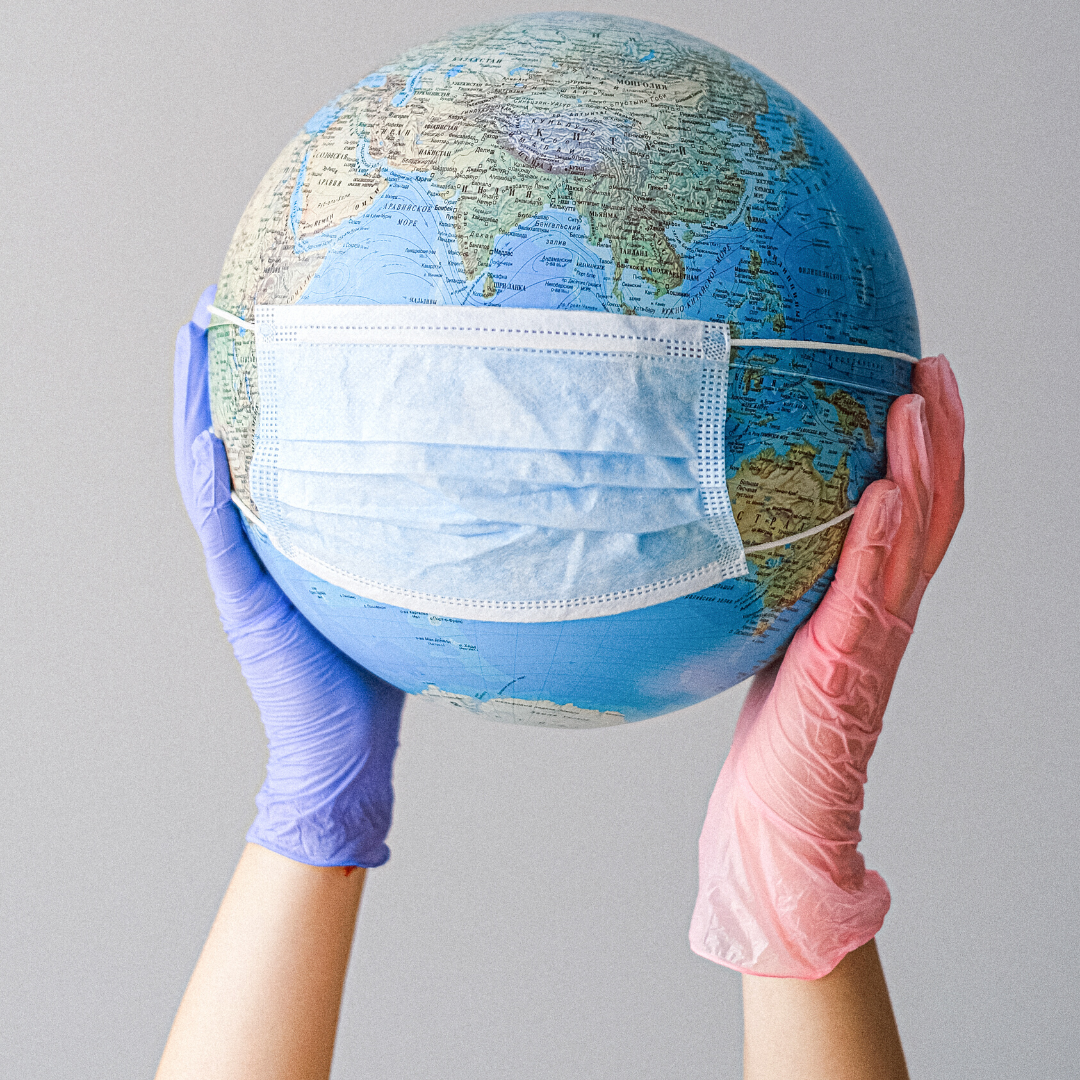Are you confused if it is the right time to begin resuming life in the office or storefront? Are you not sure where to begin? It can be difficult to imagine what your business’s “new normal” will look like. But, fear not - there are clear steps and strategies to make the process safe (and dare we say, even exciting!) to get back to work.
SHARE THE LOVE

Is your team going to begin the mass migration back to a storefront, office, restaurant, etc.? Ready to really understand best practices for the way back to work after COVID-19? The Complete Guide to Returning to Work Post COVID-19 offers all of the tips, tools, and strategies you will need to make your great return a success, and it is ALL in ONE place!
KNOW THE TIME IS RIGHT

Assessing your business’s readiness is an important first step. Ensuring your company is ready to go back to work can seem complicated but there are only two questions to ask:
Will reopening be consistent with applicable state and local orders?
Remember: Review guidance from state and local governments—the COVID-19 pandemic impacts states and regions in different ways. Just because a business can reopen in one region of the country doesn’t automatically mean your operations will be allowed to resume as well. As such, it’s critical to understand and review all relevant state and local orders to determine if and when your business is allowed to reopen.
Are you ready to protect employees at higher risk for severe illness?
Once you are confident the time is right to reopen after COVID-19, you’ll need to organize the team and get planning!
CREATE YOUR OWN TASK FORCE

Like all undertakings, a team approach is best for identifying what your business needs, creating the proper action plans, and enforcing them.
The first step of your COVID-19 Task Force will be to identify what needs to happen next. Once an action plan is established, the COVID-19 Task Force can implement changes and make sure they are enforced and monitored. While buy-in from ALL employees, clients, customers, etc. is important, having designated leads in protocol enforcement will build a safer environment for all, as it becomes a conscious responsibility.
Consider identifying:
- A Team Lead: This person is responsible for the overall action plan and working with company stakeholders and relevant health and safety bodies to manage said plan. This can be the COO, the office manager, the business owner or another detail-oriented individual.
- A COVID-19 Protocol & Prevention Lead: This team member is responsible for recommending and developing protocols to ensure the wellness of all employees. They are also tasked with overseeing procedures for isolating employees should they become sick at work.
- A Sanitization & Disinfection Lead: They will manage logistics related to daily and periodic sanitation and disinfection efforts. Their responsibilities include ensuring that routine cleanings are completed and that the necessary cleaning supplies are readily available.
- A Communications Lead: This team lead is tasked with managing any and all pandemic-related communications. They will work with HR and internal stakeholders to ensure COVID-19 training is completed and that employees and their managers understand their role in preventing the spread of the disease.
Additionally, it is important that even though some managers, supervisors and the employees may not be part of the “task force” they also must play a vital role in keeping everyone safe and healthy. Leadership should familiarize themselves with the details of the action plan, be able to answer questions from employees, and most importantly, lead by example in following all protocols.
IDENTIFY RISKS

Ready, Set, Go!
While every business faces the challenge of reopening, the risks and challenges of each business is unique. A little bit of consciousness goes a long way…
Safely restarting your business won’t be as simple as unlocking the front door. Performing a risk assessment is a great first step to identify where you company may have vulnerabilities and risk in the reopening process:
- Identifying the hazards with a walkthrough: Try to view your business with a new set of eyes. Perform a walkthrough of the premises and identify high-risk areas (e.g., breakrooms and other areas where people may congregate). It’s also important to consider what tasks employees are performing and whether or not they are especially exposed to COVID-19 risks when performing their duties.
- Discreetly and respectfully identify high-risk employees: Once you’ve identified hazards to your business, you need to determine what populations of your workforce are exposed to COVID-19 risks. When performing this evaluation, you will need to make note of high-risk individuals (e.g., staff members who meet with customers or individuals with pre-existing medical conditions). It is extremely important not to divulge personal information regarding an employee’s health status or conditions; however, it is important your business is aware and accommodates needs to best protect employees. Consult with your HR department on how to best gather information and create a safe work environment, while protecting people’s medical information.
TAKE ACTION

Gather the team and take action!
Your task force should create an action plan for all of your employees to follow. It should focus on two key components – workspace adjustments and human behaviors.
Create Rules to Adapt the Workspace
First, consider the physical space you need to manage and be ready to design a post COVID-19 friendly workspace. Moving furniture, closing off spaces, etc. may all be a necessary part of creating a physical space that is conducive to protecting the health of employees. For your action plan, consider:
Cleaning Protocols
- Disinfecting all spaces with an EPA-registered disinfectant—double-check that the disinfectant being used is rated by the Environmental Protection Agency (EPA) and listed on EPA's List N: Disinfectants for Use Against SARS-CoV-2, the virus that causes COVID-19. Disinfect all possible spaces, focusing on high-traffic and commonly touched surfaces.
- Focus on high traffic areas - Entryways and exits, high-touch common surfaces (e.g., light switches and plate covers, doors, cabinets, sinks, stair railings, countertops, beverage machines, refrigerators and elevator buttons, if applicable) and electronics common chairs and desks, from the lobby to the conference room.
- Replace your air filters—Increasing the ventilation and changing out old air filters can help promote workplace health. Talk to your building owner to learn more about the filters used in your HVAC systems.
- Creating a cleaning schedule and documenting when all spaces are cleaned to ensure compliance.
Rearranging the Physical Space
- Separating desks and workstations to ensure that there are 6 feet between each station
- Adding partitions to open floor plans
- Closing common spaces including conference rooms, break rooms and cafeterias
- Modifying high-touch surfaces (e.g., propping doors open) to avoid employees unnecessarily touching surfaces
- Posting signage around the office to remind employees of social distancing protocols
- Establishing contactless drop zones for all deliveries including mail, packages, and food
ESTABLISH PROTOCOLS FOR HUMAN BEHAVIOR

Spaces will only be as safe as peoples’ behavior engaging in them.
There is a long list of ideas and ways to minimize human contact and thus the potential spread of germs. Consider the following to be defined in your guide:
Gathering Protocols
- Banning all workplace visitors and vendors.
- Prohibiting in-person meetings whenever possible and encourage the use of virtual meetings instead.
- Limiting the size of in-person gatherings and meetings to less than 10 people.
- Staggering mealtimes and breaks to avoid having large groups of employees together at once.
- Avoid gathering when entering and exiting the facility. Employees should also only enter and exit designated areas.
Scheduling Protocols:
- Enforcing a crowd control plan to ensure that as few employees are in the building at once/reducing changing employee work schedules.
- Permitting only essential employees in the office.
- Encouraging all other employees to work remotely, if possible.
- Staggering shifts.
Employee Personal Conduct Protocols
- Encourage employees to wear masks and clean their workspace often.
- Supply your staff with masks if possible.
- Avoid job tasks that require face-to-face work with others when possible. If this is unavoidable, employees will be provided with face masks, face shields, physical barriers, and other workplace controls to ensure their safety.
- Make it a practice to check employee’s temperatures each day before work begins.
- Avoid contact with others whenever possible (e.g., handshakes).
- Avoid touching surfaces that may have been touched by others when possible.
- Distance themselves from anyone who appears to be sick.
- Follow any posted signage regarding COVID-19 social distancing practices.
Establish Employee Screening/Exposure Protocols
- Staying home when sick—encourage employees to err on the side of caution if they’re not feeling well and stay home when they’re sick or are exhibiting common symptoms of COVID-19 (e.g., fever, cough or shortness of breath).
- Be prepared for exposure - if an employee has been exposed, may have been exposed or tests positive for COVID-19 encourage them to work from home if possible and self-quarantine.
- To keep employees safe, consider conducting screening procedures to identify potentially ill employees before they enter the office. The Equal Employment Opportunity Commission permits employers to measure employees’ body temperatures before allowing them to enter the worksite. Any employee screening should be implemented on a nondiscriminatory basis, and all information gleaned should be treated as confidential medical information under the Americans with Disabilities Act—specifically, the identity of workers exhibiting a fever or other COVID-19 symptoms should only be shared with members of company management with a true need to know. Be sure to notify employees that you will be screening them to avoid any surprises.
- Make sure there is common understanding of when returning to work would be acceptable. The CDC provides guidelines including parameters such as:
- The employee may not have a fever for at least 72 hours and have not used fever-reducing medication during that time.
- Coughs and other symptoms have improved.
- Seven days have passed since they first experienced symptoms.
- They have received two negative COVID19 tests in a row.
- When an employee tests positive for COVID-19, deep-cleaning procedures will be triggered. Furthermore, employees who have been in close contact with an individual who have tested positive for COVID-19 will be instructed to self-quarantine.
MONITOR

Creating a safe work environment is only as possible as the implementation and enforcement allows. The success of your return to work action plan, no matter how well-thought-out and comprehensive it may be, is largely contingent upon how well your employees follow your health and safety guidance.
Ensure best practices are woven into the fabric of the company on an ongoing basis.
Use this checklist to make sure you build a safe work environment before opening doors and use it to monitor your consistent progress in keeping your environment safe.
- Recommended health and safety actions (based on CDC guidelines) are in one place.
- Healthy hygiene practices, such as hand washing and employees wearing a cloth face covering, have been implemented.
- The workspace facilitates social distancing.
- Your work scheduling facilitates social distancing.
- Increased cleaning, disinfection, and ventilation.
- Using social distancing guidelines at all times, in all spaces.
- Travel and commuting practices have been modified.
- Telework for employees who do not live in the local area is being encouraged.
- All employees have been trained on health and safety protocols.

